Juniper Enterprise Routing and Switching, Professional JN0-649 JNCIP-ENT Exam Practice Test
Referring to the exhibit, which two statements are correct? (Choose two.)
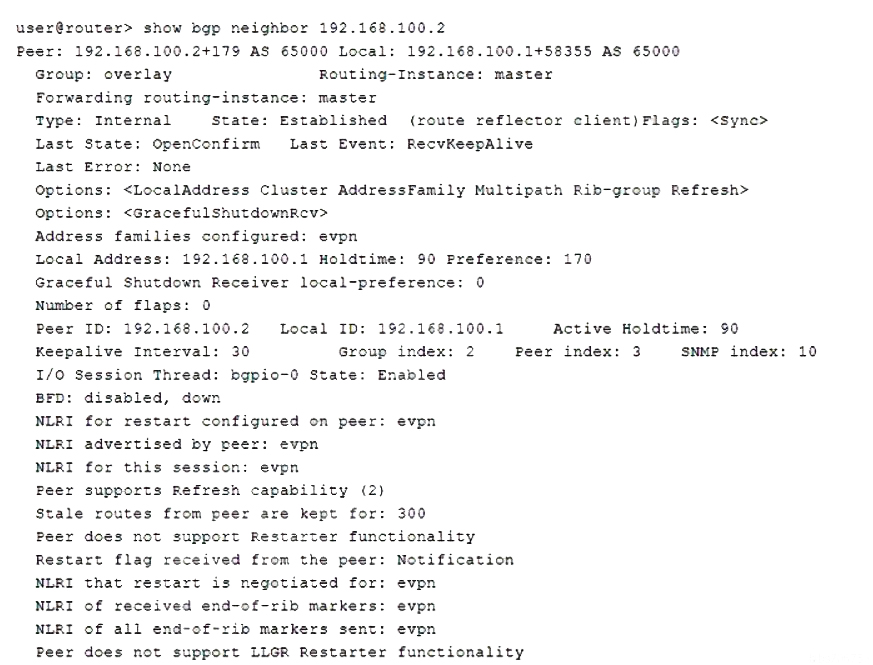
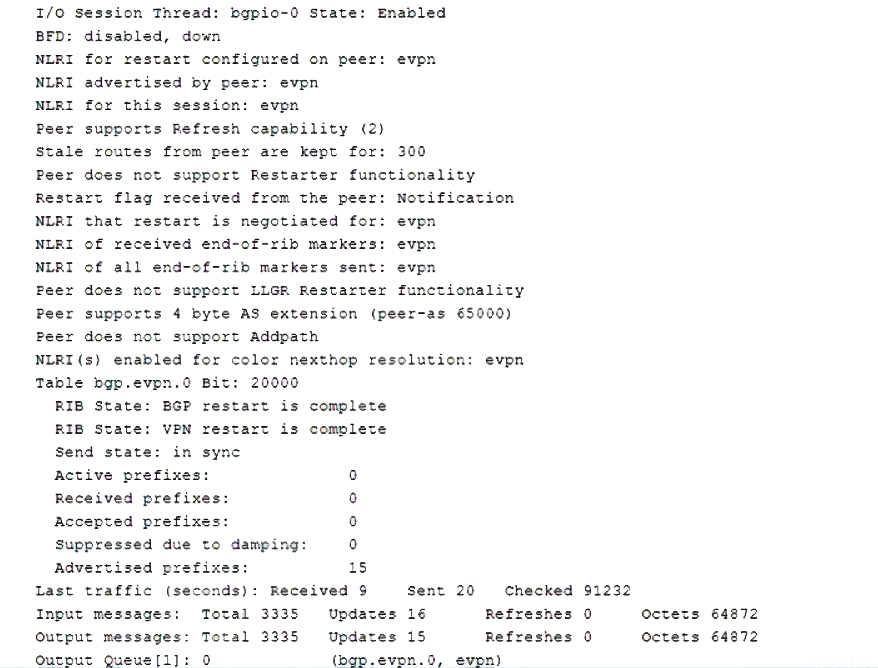
Answer : A, C
Referring to the exhibit, which two statements are correct? (Choose two.)
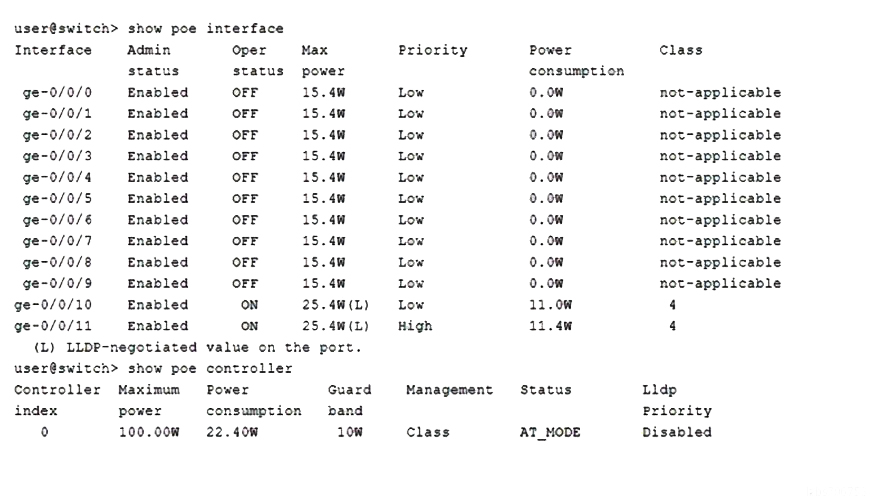
Answer : A, D
POE is enabled in the interface ge-0/0/0 but nothing is connected to it. switch is in AT mode (poe+) and interface ge-0/0/11 supports poe+ judging by maximun wattage
Referring to the exhibit, which two statements are correct? (Choose two.)
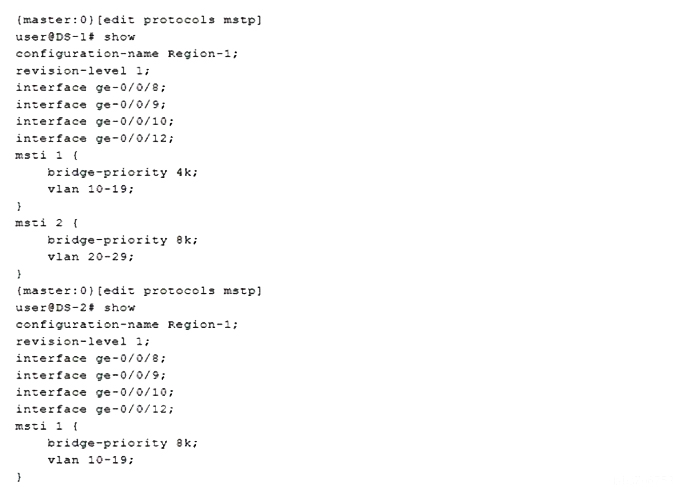
Answer : C, D
Bridge priority is to determine which bridge becomes the designated bridge.
A BGP network has been designed to provide resiliency and redundancy to a multihomed customer network.
Which two statements are correct in this scenario? (Choose two.)
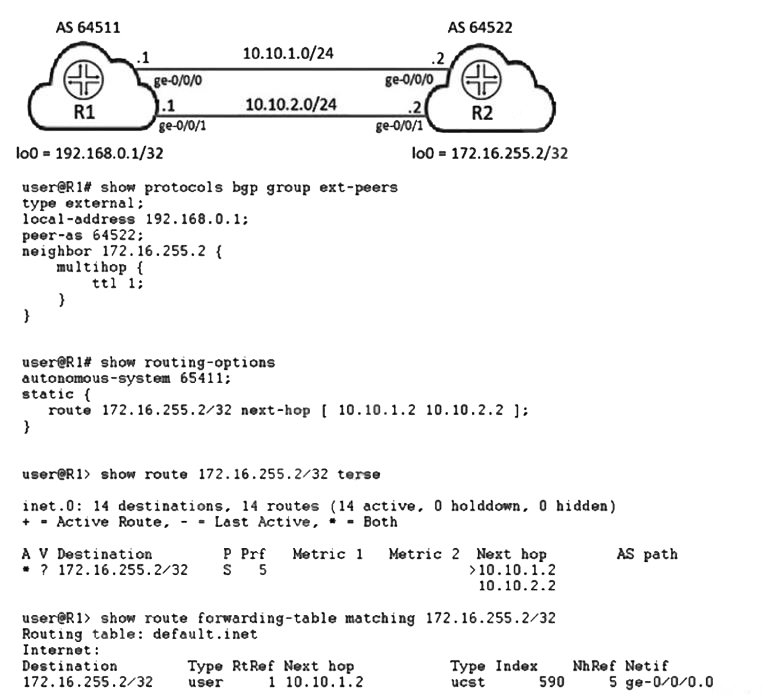
Answer : B, D
Referring to the exhibit, ServerA sends a single IP packet destined to 10.0.0.127.
Which two statements correctly describe the behavior of the resulting outbound VXLAN packets that contain the original packet destined to 10.0.0.127? (Choose two.)

Answer : A, D
You enable the Multiple VLAN Registration Protocol (MVRP) to automate the creation and management of virtual LANs.
Which statement is correct in this scenario?
Answer : A
The forbidden mode does not register or declare VLANs. You can change the registration mode of a specific interface to forbidden. An interface in forbidden registration mode does not participate in MVRP even if MVRP is enabled on the switch.
https://www.juniper.net/documentation/us/en/software/junos/multicast-l2/topics/topic-map/mvrp.html
MVRP is disabled by default on the switches and, when enabled, affects only trunk interfaces. Once you enable MVRP, all VLAN interfaces on the switch belong to MVRP (the default normal registration mode) and those interfaces accept PDU messages and send their own PDU messages. forbidden---The interface does not register or declare VLANS (except statically configured VLANs).
Your enterprise network is running BGP VPNs to support multitenancy. Some of the devices with which you peer BGP do not support the VPN NLRI. You must ensure that you do not send BGP VPN routes to the remote peer.
Which two configuration steps will satisfy this requirement? (Choose two.)
Answer : B, D
Apply both the VRF export and BGP group or neighbor export policies (VRF first, then BGP) before routes from the vrf or l2vpn routing tables are advertised to other PE routers.